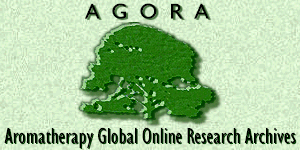


 With the hyssop, Hebrew EZOV, we come to one of the most important
Biblical aromatic and medicinal herbs. It is referred to various ritual
contexts, and used as a whole herb. Most, if not all, authorities
identify it as Origanum majorum, known popularly in the Middle East
as zaatar or zahatar. Felix comments that the plant contains a strong
odorous oil, i.e. an essential oil, used till today in the perfume industry.
In the book of Exodus, the herb was used for painting the doorposts
with blood (XII:22). The herb is several forking groups of branches,
shaped much like a brush or broom. Hertz comments that "it was a convenient
instrument for sprinkling, as its leaves readily absorb the liquid and
freely give it out when shaken." In the book of Leviticus, the hyssop
is used with the sacrifices to purify the impure (leper and red heifer).
The use is a practical one : there is in the hyssop a component that
prevents blood clotting : very important when the ceremony calls for
the blood to run off the altar!
With the hyssop, Hebrew EZOV, we come to one of the most important
Biblical aromatic and medicinal herbs. It is referred to various ritual
contexts, and used as a whole herb. Most, if not all, authorities
identify it as Origanum majorum, known popularly in the Middle East
as zaatar or zahatar. Felix comments that the plant contains a strong
odorous oil, i.e. an essential oil, used till today in the perfume industry.
In the book of Exodus, the herb was used for painting the doorposts
with blood (XII:22). The herb is several forking groups of branches,
shaped much like a brush or broom. Hertz comments that "it was a convenient
instrument for sprinkling, as its leaves readily absorb the liquid and
freely give it out when shaken." In the book of Leviticus, the hyssop
is used with the sacrifices to purify the impure (leper and red heifer).
The use is a practical one : there is in the hyssop a component that
prevents blood clotting : very important when the ceremony calls for
the blood to run off the altar!
The precise identity of Bibilical Hyssop is not firmly fixed. This article and Wikipedia suggest that it is actually Origanum syriacum, but hedges their bets. The plant currently used as an essential oil is Hyssopus officinalis, which is an entirely different species. -rs
-Michel Vanhove
AGORA Pages originally hosted on these now dead sites are now hosted on the AGORAIndex.org site when available:
- benzalco.com
- aromavitae
- aromatours
- FragrantDemon
Like us on Facebook at [Coming soon]
View our Twitter feed on this page.
©Aromatherapy Global Online Research Archive and it's individual authors. All Rights Reserved.